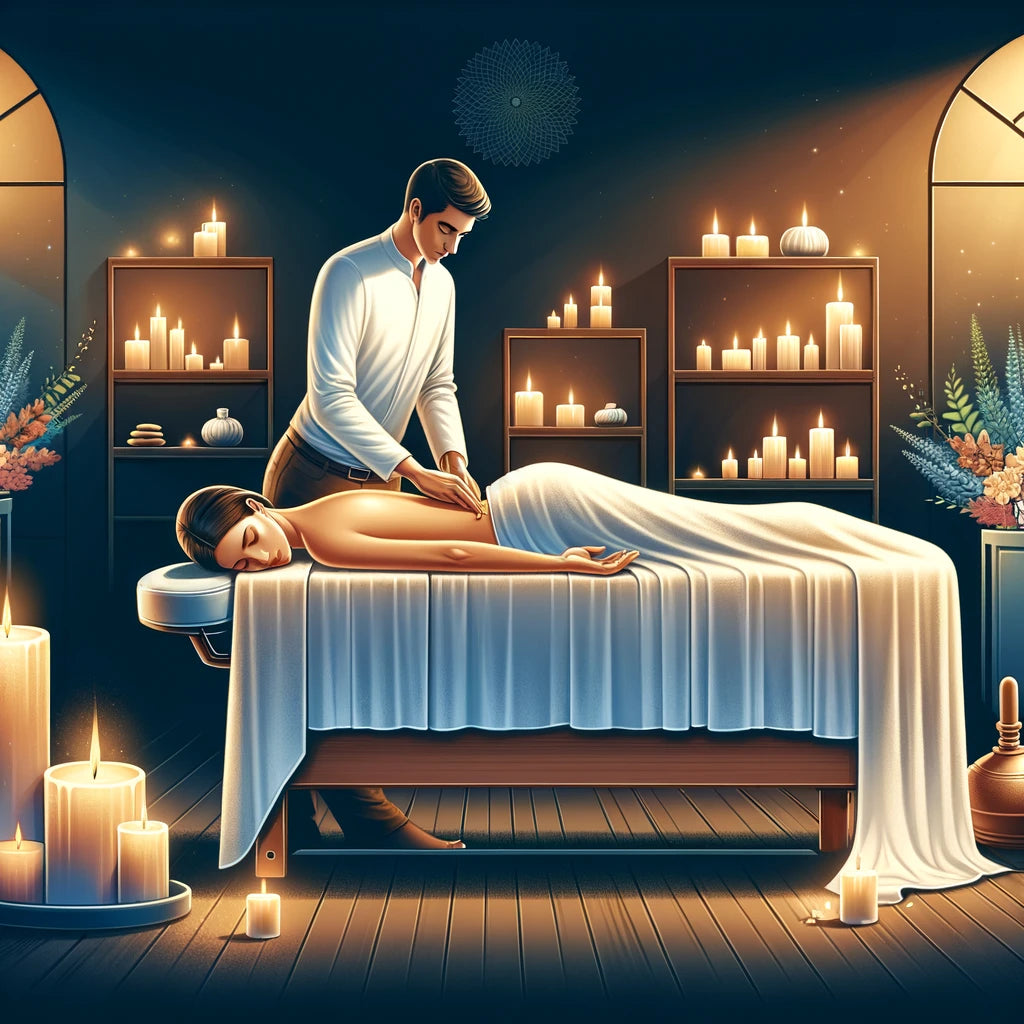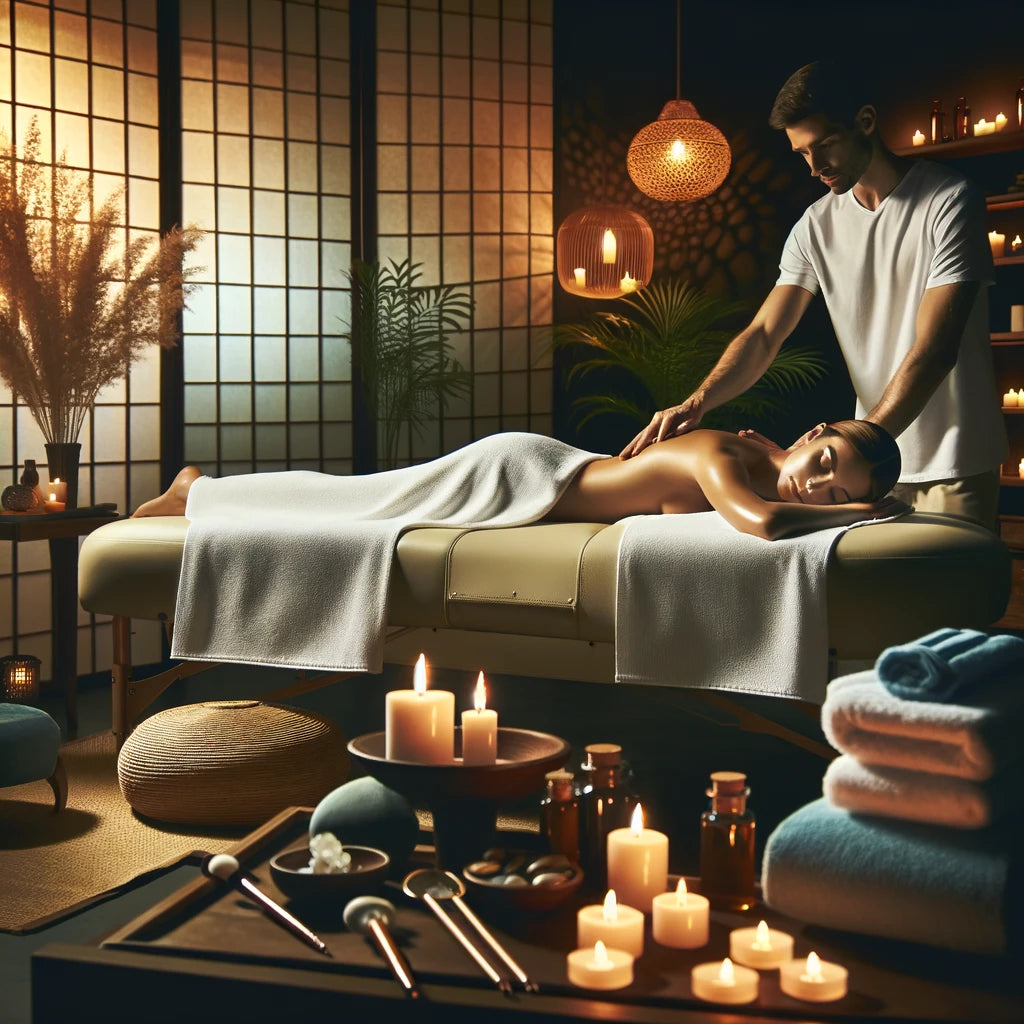
How often should you go for a massage?
Massages have been a popular way to relax the body and mind, reduce stress, and promote overall well-being for centuries. But how often should you get a massage for the best results? This question doesn't have a one-size-fits-all answer, as the ideal frequency depends on various factors. In this article, we explore the importance of massage, the different types of massage, and offer frequency recommendations based on different needs and goals.
Summary of the article
The ideal frequency for massages depends on individual needs, health goals, and life circumstances. Those seeking relaxation often benefit from monthly sessions, while people with specific conditions or athletes may require weekly massages. Important factors include personal health, lifestyle, and budget. A qualified massage therapist can advise based on individual goals. Listen to your body and adjust the frequency for optimal well-being. Massages are a key element in promoting health and well-being; the right frequency maximizes their benefits.
The importance of massage
Massages offer a variety of health benefits. They can help relieve muscle pain, improve circulation, reduce stress and anxiety, and promote sleep quality. They also play an important role in rehabilitation and can accelerate healing. Today, there are more cost-effective alternatives to traditional massage, which can be relatively expensive in the long run.
These include massage devices such as massage guns, but also modern massage chairs.
Different types of massage
There are many different types of massages, each with its own specific techniques and benefits.
- Sports massage : Ideal for athletes to accelerate recovery and prevent injuries.
- Swedish massage : A gentler form of massage used to relax and improve blood circulation.
- Deep tissue massage : Targets deeper muscle layers to relieve chronic muscle tension.
How often should I get a massage?
How often you should get a massage depends on several factors, including your personal health, lifestyle, and specific goals.
- For relaxation : People who seek massage primarily for relaxation may benefit from a monthly session.
- For therapeutic purposes : For specific conditions or illnesses, more frequent treatment, such as once a week or every two weeks, may be beneficial.
- For athletes : Active athletes may benefit from more regular massages to improve performance and reduce recovery times.
Personal factors
The decision of how often to go for a massage is also greatly influenced by individual needs and circumstances.
- Health condition : People with chronic pain or specific conditions may require more frequent sessions.
- Lifestyle : A stressful daily routine may require a higher frequency to effectively reduce tension.
- Budget : Financial possibilities also play a role in the decision-making process.
Practical tips
To find the right balance, it's recommended to consult with a qualified massage therapist who can provide personalized recommendations based on your personal needs and goals. It's also advisable to listen to your body and adjust the frequency if you find that your current frequency isn't producing the desired effect.
1. What factors determine the optimal frequency of massages?
The question of the optimal frequency of massages cannot be answered in general terms, as it depends on a multitude of individual factors. The most important aspects include general health, personal wellness goals, level of physical activity, existing complaints or injuries, and psychological stress levels. Scientific studies suggest that regular massages can improve well-being, reduce stress, and contribute to muscle relaxation. However, personal adjustment of massage intervals is crucial to fully reap the benefits.
For people who face a stressful daily routine or who engage in intensive exercise, a higher frequency of massages may be recommended. In such cases, regular sessions not only support physical regeneration but also provide a mental break that contributes to overall stress reduction. On the other hand, people who seek massages primarily for general relaxation or as a preventative measure may require less frequent appointments.
For specific conditions such as chronic pain, tension, or recovery from injuries, more intensive care from professional massage therapists may be beneficial. Individual consultation with a specialist can help develop an optimal treatment plan.
In addition to the direct application of massage techniques by a therapist, modern technologies such as massage chairs offer a practical alternative for home use. One example is the NAIPO massage chair, which offers a customized massage experience thanks to its diverse adjustment options and programs. These devices can be a valuable complement to professional massage and offer the flexibility to enjoy a massage at any time in your own home.
2. How does the recommended massage frequency differ between relaxation and therapeutic treatment?
The recommended frequency of massages varies considerably depending on whether the focus is on relaxation or therapeutic treatment. Massages for relaxation focus on general well-being. They serve to reduce the stress of everyday life and promote a sense of calm. In such cases, even a monthly session can have positive effects on mental and physical health.
Therapeutic massages, on the other hand, aim to address specific health issues. These include, among others, the relief of chronic pain, the treatment of injuries, or supporting rehabilitation. Due to the focused treatment goal, therapeutic massages may be required at shorter intervals, often weekly or even several times a week, depending on the severity of the issue and the advice of the treating therapist.
The choice of massage frequency should always be made in consultation with a qualified massage therapist, taking individual needs and goals into account. Close collaboration allows for optimal treatment adaptation and maximized massage effectiveness.
For those who would like to enjoy the benefits of massage at home, purchasing a massage chair is a good option. Products like the NAIPO massage chair can provide valuable support, especially when regular visits to a massage therapist are not possible or desirable. With such a device, the benefits of therapeutic and relaxing massage can be combined and flexibly integrated into everyday life.
3. Can too many massages be harmful?
While massage offers numerous health benefits, it's possible that too frequent massages can be counterproductive under certain circumstances. Excessive massage therapy, especially when intensive techniques like deep tissue massage are used, can lead to muscle overstimulation, increased sensitivity, or even injury. It's important to take a balanced approach and pay attention to your body's signals.
Experts recommend allowing sufficient recovery time between massage sessions so the body can fully absorb the beneficial effects. The optimal frequency depends on the individual's response to the massage, general health, and specific goals.
Massage chairs like the NAIPO offer the advantage of allowing users to control the intensity and frequency of the massage, minimizing the risk of overexertion. The individual adjustment options allow users to find a comfortable balance without running the risk of overtaxing their muscles.
4. How do I find out which type of massage is best for my needs?
Choosing the right type of massage is crucial for achieving maximum health and well-being benefits. The decision should be based on a careful evaluation of personal health goals, existing conditions, and preferences. It's recommended to consult with a qualified massage therapist who can provide a professional assessment and offer specific recommendations based on individual needs.
It can also be helpful to try different types of massage to learn which techniques deliver the best results. From classic methods like Swedish massage to specialized techniques like trigger point therapy, there is a wide range of options for promoting individual well-being.
For those who value the flexibility and comfort of a massage at home, massage chairs can offer a practical alternative. A high-quality massage chair like the one from NAIPO features various programs and settings that allow you to simulate different massage styles. This offers the opportunity to test the effects of different techniques in the comfort of your own home and find the one that best suits your personal needs.
By educating yourself, seeking advice, and trying out different options, you can identify the type of massage that best contributes to your health and well-being.
Conclusion
There's no single answer to how often you should get a massage. It depends on a variety of individual factors. The key is to listen to your body and choose a frequency that suits your personal health and well-being goals. Massages are a wonderful way to take care of yourself, and the right frequency can help you achieve their full potential.
FAQs
1. Can too frequent massage be harmful? Overly frequent massages can cause irritation in some people, especially when using intensive techniques like deep tissue massage. It's important to take a balanced approach and adjust the frequency as needed.
2. Are massages also suitable for children? Yes, massages can be beneficial for children, especially for relaxation and muscle pain. However, it's important to choose a therapist who has experience treating children.
3. How long should a massage session last? A typical massage session lasts between 30 and 90 minutes, depending on the individual's specific needs and goals.
4. Can massages help cure illnesses? While massages offer many health benefits and can help relieve symptoms, they should not be considered the sole treatment for illnesses. However, they can be a valuable addition to a comprehensive health plan.
5. How do I find a qualified massage therapist? It's advisable to look for licensed and certified massage therapists and consider reviews or recommendations from friends, family, or healthcare professionals.







Leave a comment
This site is protected by hCaptcha and the hCaptcha Privacy Policy and Terms of Service apply.